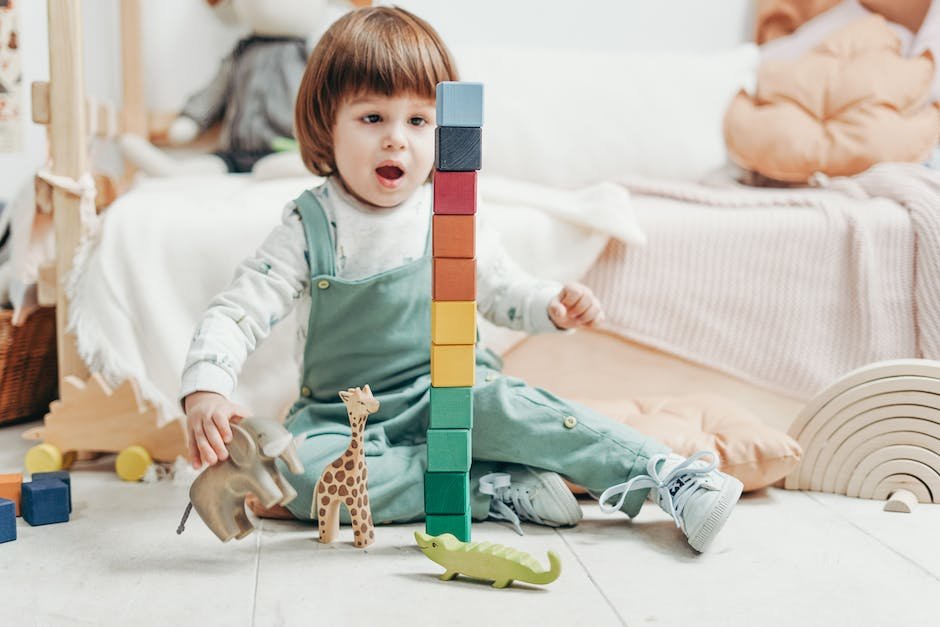
Autism is a complex, multifaceted spectrum of neurodevelopmental conditions that deeply impacts an individual’s social interaction, communication abilities and overall behavior. This article seeks to demystify Autism, delving into its various manifestations, early identification signs, and the journey to diagnosis. By bringing together a wealth of resources, we aim to guide parents and families through navigating the healthcare system, creating an Autism-friendly home environment, and understanding the importance of self-care. As we delve deeper into the intricate world of Autism, we hope to empower families with the information needed to create strong support networks and ultimately, enrich the lives of those living with Autism.
Understanding Autism
The Magic Tapestries of Autism: Understanding Its Impact on Your Child
Parenting indeed holds a spectrum of surprises. Some of these are delightful surprises while others could appear as challenges only to transform into profound learning experiences. Understanding Autism certainly falls into this second category. It expands your parenting horizon, fostering a better understanding of the beautiful mind of your child.
Autism, clinically known as Autism Spectrum Disorder (ASD), can be considered akin to a vast landscape with countless unique aspects rather than a straight path. Children diagnosed with Autism interact with the world and process information in ways distinctively different from their peers. What does that mean? Simply put, the world as perceived by an autistic child is beautifully different, illuminating a vivid spectrum of human diversity.
How Autism Affects Your Child
The impact of autism can be varying across different areas of your child’s life.
Social Interaction: Autistic children may have a different way of interacting socially. They might struggle with the understanding of societal norms or have difficulty in developing and maintaining relationships. But this doesn’t mean they don’t crave companionship or friendship. With continuous engagement and understanding, they can form deep, meaningful bonds.
Communication: Equipped with a unique cognitive style, autistic children may face challenges in both verbal and non-verbal communication. They might have unusual speaking patterns or may use gestures instead of words to express themselves. It’s important to remember that every word or gesture is their way of reaching out – it’s our job to understand, interpret, and respond.
Repetitive Behaviors: They may show a strong inclination towards certain patterns, routines, or rituals. This stems from their need for a structured and predictable environment. Let’s remember that this is their way of navigating a world that can sometimes seem chaotic to them.
Sensory Processing: Sensory overload can be another challenge for children with Autism as they might respond differently to touch, sound, sight or smell. It’s as if their sensory antennae are super-tuned, pulling in more information than they can process.
Unlocking Potential: The Key to Parenting an Autistic Child
Parenting a child with Autism may require a bit more patience, immense empathy, and a deep-dive into understanding their unique ways. It’s about shunning preconceived notions and celebrating their differences. Remember, every child has the capacity to learn and develop skills – Autism doesn’t curtail this potential but may simply change the learning process.
Professionals advocate for early intervention therapies like speech therapy, occupational therapy, or social skills classes that can prove advantageous. Reach out for community support – you’re not in this alone. There are numerous resources available including support groups, online communities, therapists, and educators who understand Autism and can be your guiding light.
Lastly, let’s not forget – a child with Autism, just like any other child, needs unconditional love, acceptance, and the freedom to explore their unique identities. They might look at the world from a different window but the view they offer is just as magical, compelling us to break free from the monotony, and embrace diversity wholeheartedly. After all, isn’t that what parenting is all about? Teaching and learning from these beautiful, tiny humans in our lives.
So, let’s push the envelope of understanding. Let’s walk this tapestry of human diversity with our child and let them show us what it looks like to view the world through their lens. Yes, it might be different, but it is every bit as magnificent!

Early Signs and Diagnosis
Recognizing Early Signs of Autism: Facilitating Accurate Diagnosis
Parents, it’s a big and unexpected journey when you begin to suspect your child might have Autism Spectrum Disorder (ASD). It’s not to be taken lightly, and indeed, every parent’s mission is to understand and support their child’s unique neurodevelopmental path. With autism being a spectrum disorder, it presents differently in every child, making early recognition tricky.
But as caregivers seeking to support cherished young ones, it’s key to identify those preliminary signs. Combined with medical consultation and thorough observation, early recognition can facilitate accurate diagnosis, vital for timely intervention strategies.
First off, remember, it’s normal for kids to develop at their own pace. However, some early indicators might suggest a need for professional assessment. Slowed speech development or regression, for instance, raises flags. If by their second birthday your child has not started to string words together or perhaps has stopped saying words they once knew, it’s wise to look into it.
Secondly, consider your child’s use of non-verbal communication cues. Children on the autism spectrum might not engage in typical eye contact, may struggle to recognize and respond appropriately to facial expressions, and might appear disinterested in sharing their world with you—their toys, discoveries, joy. Recognizing this as a potential sign rather than brushing it off as mere shyness can aid in the early identification of ASD.
Thirdly, repetitive movement, known as self-stimulatory behavior or ‘stimming,’ can be an early sign. Though all children engage in this to some extent—such as twirling their hair or biting nails—intense, focused, and frequent stimming, like hand flapping or spinning, may indicate ASD.
Apart from these, look for signs of hyper-fixation on specific activities, adherence to rigid routines, and an elevated or diminished response to sensory stimuli. These can all be indicators.
In navigating this journey, remember that while a physician can offer a diagnosis, you are the constant observer in your child’s life. Regularly record and share your observations, even if they seem trivial. Consistency and comprehensiveness of information is key, as minor patterns could add up to significant evidence for ASD.
For everyone looking to understand a potentially autistic child, a balanced approach is necessary. At home, try not to pathologize everything your child does, though maintain an observing eye. At the doctor’s office, assert your concerns and ask your questions outright. Remember, you are your child’s primary advocate — your attentiveness makes all the difference!
Lastly, patience is paramount. Diagnosis can be a lengthy process, but remember it’s a critical one. Remembering that every child’s developmental journey is unique will also help ease the process. Understand that the aim here is not to label, but to comprehend and support your child’s development in the best possible way.
Undoubtedly, an early diagnosis of autism brings with it a whirlpool of emotions for parents. But, it’s the beginning of the journey to understanding your child’s unique world. It is a chance to equip them and yourselves with the right tools, knowledge, and strategies for a fulfilling life. Building a caring and empathetic community around the child is what truly matters — every little superhero deserves a loyal squad!
So, with patience, persistence, and lots of love, recognize that you are not alone — this journey is a collective one, and together, autism can be understood and embraced.

Navigating the Health Care System
Navigating the labyrinth of health care can be daunting for any parent, but when faced with a diagnosis of Autism Spectrum Disorder in a child, it can often feel overwhelming. It’s important to remember that you are not alone, and there is a wealth of expertise and resources to guide and support you on this journey.
Parents hold the keystone position when navigating the health care system for an autistic child. A strong foundation is your pediatrician, who is often the first line of medical assistance. In collaboration with other experts in child development, the pediatrician can provide crucial information for an early, correct diagnosis. From this starting point, parents can begin to understand the available treatment options.
Intervention teams may soon become a part of your life. These teams typically consist of neurodevelopmental pediatricians, child psychiatrists, psychologists, speech-language pathologists, and school psychologists. Remember, these are invaluable resources not just for your child, but also for you in understanding your child’s unique needs and providing the most beneficial care. It’s okay to ask any questions no matter how insignificant they may seem, clear communication with your medical team is essential.
In terms of available treatments, there’s no one-size-fits-all approach since autism presents uniquely in each individual. Early and ongoing intervention plays a significant role and typically involves a team of specialists. Parent-Implemented Intervention (PII) might be suggested, which includes techniques that parents can implement in the child’s everyday activities. Personalized programs involving occupational speaking, social skills, and behavioral therapy can also be beneficial.
Therapies such as Applied Behavioral Analysis (ABA), Speech Therapy, Occupational Therapy, and Social Skills training, among others, can also be integrated into a comprehensive treatment plan. Approaches like ABA have shown affirming results in improving communication, social skills, and reducing challenging behaviors.
Parents should also consider the value of support groups. These can be sources of great wisdom, offering shared experiences, emotional help, and practical advice. Moreover, such communities can offer invaluable reassurance that you’re not alone in this journey.
Navigating insurance and understanding coverage for therapies can be complex and confusing. Advocacy organizations and hospital social workers can help untangle and navigate these complexities to secure the coverage necessary for the child’s treatment. Seek out resources and organizations that offer financial assistance for autism treatment and services.
Another vital piece of the puzzle is the child’s educational environment. Ensuring the child has access to an accommodative educational setting is a critical aspect of improving the child’s functionality and well-being. Individualized Education Programs (IEP) or 504 plans should be considered to adapt the learning environment to the child’s needs.
Remember, it’s a journey. There will be highs and lows, progress and plateaus, joy and despair. There might be treatments that seem to not work at all, while others could make a considerable difference. The key is to keep patience, persist, and continually learn and adapt. Your child is a unique individual with a world of potential. Navigating the healthcare system for an autistic child can be a challenge, but it offers a route to unlock that potential and ensure your child gains the opportunity to thrive.

Creating an Autism Friendly Home Environment
Creating an Autism-Friendly Environment at Home: Fostering Comfort and Growth
Raising a child on the spectrum means constructing a soothing, friendly environment, one where the child feels secure and emboldened to achieve their full potential. An autism-friendly home isn’t just about containment or controlling behavior — it’s about crafting an atmosphere that facilitates sensory comfort, improves cognitive ability, and nurtures daily communication skills.
One of the cornerstones of such an environment is consistency. Regular schedules and clear rules help autistic children navigate their day, providing a comforting framework they can rely on. Furnishing a designated quiet zone at home where kids can retreat and wind down adds another level of comfort, helping to reduce sensory overload.
Engage in activities that foster growth, focusing on their interests as a doorway to skill building. For instance, if your child displays an affinity for music, don’t just limit them to the passive act of listening. Allow them to tap into their creativity – influential music lessons can serve as a starting block for cognitive development and language skills.
Incorporate visual aids to make life simpler. Visual schedules, labels, and instructions help translate words into visual cues that are easier to comprehend for autistic kids. Additionally, decor and layouts that minimize chaos and clutter can reduce over-stimulation and promote a sense of calm.
An autism-friendly home is not void of communication. Use everyday events as opportunities to develop conversation skills. Casual chats during mealtime, reading bedtime stories, or even something as simple as narrating your daily chores can assist in creating a language-rich environment.
Remember that sensory needs vary from child to child. You might want to approach interior design with sensory processing in mind. Incorporating calming colors, sufficient lighting, and comfortable furniture can make a world of difference. If your child is sensitive to certain textures, consider that when choosing bedding, clothing, and toys.
Play is an integral part of all children’s growth, more so for kids on the autism spectrum. Consider creating a safe play area where the child feels at ease. Introduce sensory toys, puzzles, building blocks, and other educative games that cater to their interests and developmental needs.
It’s essential to also ensure safety at home. Many autistic children are prone to wandering or have unique safety concerns, so one might need to childproof their environment even beyond the toddler years. Install safety devices and stay mindful of hazards that might not be a threat to other children.
Lastly, build a supportive network. Tap into resources such as parent support groups, online forums, and local health services for assistance. Even the most well-prepared parents can sometimes feel overwhelmed. It’s okay to ask for help and lean on others for advice and companionship.
Creating an autism-friendly environment at home is a journey, not a destination. It needs continual reassessment, reworking, and reflection as your child’s needs change and grow. No two autism journeys look alike, just as no two children are alike. With love, patience, and steadfast resilience, parents can create a nurturing space that provides comfort and fosters growth for their autistic children. After all, home is where our story begins.

Self-Care for Parents and Siblings
Caring for a child with Autism Spectrum Disorder (ASD) necessitates not only an understanding of the condition and a loving approach to parenting, but also an important, yet often overlooked aspect: self-care.
Encouraging wellness for parents and siblings alike remains just as crucial as ensuring the wellbeing of our lovely autistic child. Now, you might wonder, why is self-care such a vital piece of the autism parenting puzzle? How can it be practiced amid daily routine? Let’s look into this essential aspect and shed some light on its importance and practicality.
When you’re caught up in the unique rhythm of an autistic household – monitoring therapies, providing behavioral support, facilitating communication, and everything in between – it can be easy to push personal needs to the side. But remember, our ability to effectively support our children heavily relies on our own mental and physical health. For parents, operating from a place of stress and exhaustion can decrease your capacity to offer the best care.
Likewise, this scenario tends to impact siblings, as they too shoulder responsibilities and emotional realities tied to ASD life.
By practicing self-care, we’re effectively refilling our reservoirs of strength, patience, and resilience, which can get depleted in the face of persistent challenges. It allows us to regroup personally and take on familial responsibilities more effectively and compassionistically. It provides siblings a necessary balance amidst family dynamics that may seem unfairly weighted at times.
Practicing self-care can look different for every family member. It does not necessarily mean grand acts of pampering but may be as simple as ensuring adequate sleep, eating healthily, exercising regularly, or pursuing a hobby. It’s about carving out time for individual needs, separate from the role of a caregiver.
For parents, it could be scheduling regular meet-ups with friends, indulging in a book at the end of a long day, enjoying the tranquility of a leisurely walk, or even attending therapy or counseling. These acts can recharge you, providing a well-deserved respite and equipping you to be a better care provider.
As much as parents are paramount in this equation, don’t forget the siblings either. They might need time to engage in activities striking a chord with them or have conversations about their feelings and experiences. Encouraging open communication, along with involving them in therapy and medication talks, can also be incredibly empowering.
While self-care might initially seem self-indulgent in this role as a caregiver, remember, it’s like the airplane safety rule – put on your oxygen mask first before assisting others. Without your wellbeing, efficiently navigating the whirlwind of ASD can become an uphill struggle. Be gentle on yourself and others around, bask in the strength springing from self-care and continue to embrace the joyous journey of raising a child with autism.

Creating a Support Community
Creating and Benefiting from a Supportive Community for Families Living with Autism
In the journey of raising a child with Autism Spectrum Disorder (ASD), support from a community of like-minded people who are walking the same path cannot be overestimated. A family living with autism undoubtedly encounters unique challenges but the rewards of this journey exceed the challenges, especially when such a family is surrounded by a supportive community.
Creating a supportive community means not just seeking one out, but building and nurturing it. This community involves close family members, friends, therapy teams, educational institutions, online support groups, and non-profit organizations. There’s an old African proverb that says it takes a village to raise a child, and this is particularly significant when the child has special needs like ASD.
An important benefit that families can derive from being part of a supportive community is the opportunity to learn and share. Navigating through autism may feel like treading an unknown path with unique turns at every bend for every child. Parents in a supportive community network can share insights, successes, and challenges. They can also learn and apply the best practices in their journey, from dealing with a meltdown to creating an autism-friendly environment at home.
Supportive communities can also provide a sense of validation and combat the feelings of isolation that parents of autistic children may often experience. Hearing similar stories and struggles eases the feeling of being alone in this journey. In a way, the community becomes a beacon of hope and a source of strength.
Looking ahead, parents can learn about the transition to adulthood, job training programs, housing, and care facilities for adults with autism. Pioneering families who have walked this path before can share valuable advice and experiences. The community can thus serve as a resourceful guide through the various stages of life with autism.
The comfort derived from being in a safe, understanding space where no judgment is passed, and there’s a shared understanding of unique experiences, is incredibly soothing. No explanations are needed for behaviors that might be deemed “different”. There’s acceptance without questions. It’s a space where the incredible strength and endless love that goes into raising an autistic child is understood and appreciated, without words needing to be spoken.
Fostering relationships within a supportive community is also beneficial for siblings of children with autism. They get to interact with other siblings who are going through similar experiences. This social support for siblings is critical, helping them deal with feelings of anxiety, jealousy, or guilt that they might struggle to express.
Moreover, being involved in a supportive community raises awareness and brings about societal changes in perception and acceptance of autism. Every shared story, every piece of advice, collaboratively brings about a richer understanding of autism. Together, the community helps unravel the complexities of autism, while breaking stigmas and biases associated with it.
Raising an autistic child is an enlightening journey, one that brings out the strength unknown, love unfathomable, and resilience unmatched in parents and siblings. Remember to lean into the supportive community around you, to foster growth and understanding not just for yourselves but for society at large. Together, we certainly are stronger!

Bearing the responsibility of caring for a child with Autism is no small feat, nor is it one that should be faced alone. Employing coping strategies at home and maintaining regular self-care are critical components of managing a family’s overall well-being. Encouragingly, there is a strong, supportive community available for those dealing with Autism. By actively seeking out and engaging with this community, parents can draw from collective knowledge and experiences, providing them access to resources and emotional support. Insightful engagement, advocacy, and maintaining open lines of communication can go a long way in creating a fruitful and rewarding life for all family members, spearheading resilience in the face of Autism.




